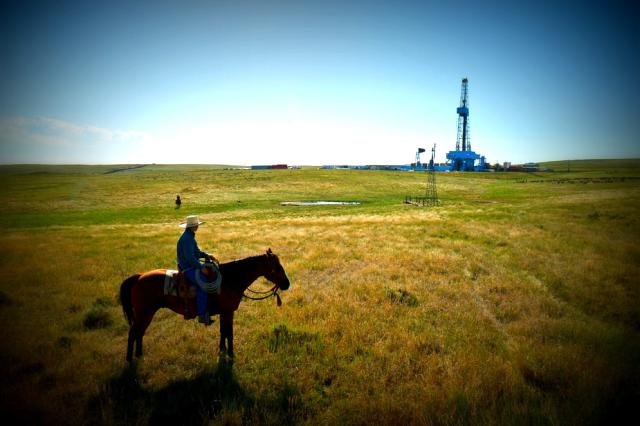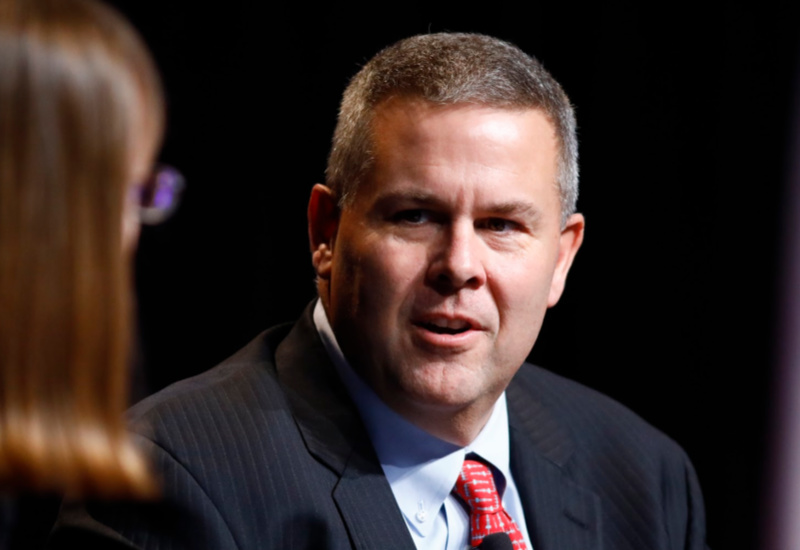
Jay Graham’s new venture, Spur, has initial assets on New Mexico’s Northwest Shelf, but Graham indicated he would be back in the Eagle Ford once his noncompete expired after a year. (Source: Hart Energy)
[Editor's note: A version of this story appears in the July 2019 edition of Oil and Gas Investor. Subscribe to the magazine here.]
The former CEO of the former WildHorse Resource Development Corp. publicly pondered his new private start-up and heaved a proverbial sigh of relief. “I’ll never say that I’ll never be a public CEO again, but Lord, I hope I’m not,” said Jay Graham. “The time demands on a public management team are insane; it’s something that I’ll never miss.”

WildHorse Resource Development,
revealed his new venture,
Spur Energy Partners, in May.
(Source: Hart Energy)
Graham’s WildHorse Resource merged with Chesapeake Energy Corp. in February. In May, Graham revealed his new venture, Spur Energy Partners LLC, simultaneously with the acquisition of Percussion Petroleum for an undisclosed amount. Spur is backed by KKR, and you can read more about the deal in our A&D Watch section in this issue.
Graham spoke at the ADAM-Houston group just three days after the announcement. But it wasn’t time demands that prompted the public exit. Rather, it was market mood.
WildHorse was one of the last E&Ps to catch an IPO, riding a wave of opportunity in December 2016 on an OPEC announcement to continue volume cuts. In the two and a half years since, the public markets have not only closed to the oil and gas sector, but also dramatically redefined what a public E&P should look like to receive an investor’s nod. But with promising assets in the East Texas Eagle Ford and running room to boot, what prompted Graham to walk away from a field office with a view of Kyle Field?
__________________________________________________________________________________________________
RELATED:
“The Eastern Eagle Ford” featured in the September 2018 issue of Oil and Gas Investor
__________________________________________________________________________________________________
“This whole free-cash-flow mantra was getting pounded into me every time I took a trip to New York, Boston, Philadelphia or Baltimore with the T. Rowes and Fidelities of the world,” he said.
To go public as a growth company, then be told by investors shortly thereafter, “’Hey, we’ve changed our mind—you need to be a free-cash-flow company,’ well, that’s just not the assets we had at the time,” he said.
The industry has and will continue to have “a real hard time” staying cash-flow positive, he said, “unless you’re one of the guys in the core of the core of the core and you’re getting great wells. We’re just a capital-intensive industry.”
About a year prior to sale, the WildHorse team determined to establish a five-year plan and discovered it had to make some hard choices. One, it could continue to be a growth company and go against the whims of the market, and just see what happened. Two, it could try to build scale by acquiring or merging with other companies.
Or three, it could be the target.
“When you look at it from a public standpoint, a $10-, $12-, $15 billion company is where you need to be. That’s when you start attracting generalist investors. At $3- to $4 billion we weren’t given the privilege of sitting down with the generalist portfolio manager.
“If you’re a small, midcap company, you’ve got to grow.”
But WildHorse needed to double or triple its size to achieve that scale, a formidable task in an oppositional market.
The initial answer was No. 2. “We were going down the path of talking to a few companies to merge where WildHorse would have come out on top, but instead we started talking to Chesapeake and were fortunate to sell to them.”
At another public event, IPAA’s Private Capital Conference in January just days before closing the sale, Graham likened chasing the whims of the public investor to catching a falling knife.
“If you do, you hurt yourself,” he said. “That’s what chasing investor sentiment does to you. You start making bad decisions. You’ve just got to focus on what you’re doing and make sure you’re set up right for yourself. … That is part of the impetus of why we felt like a potential merger with Chesapeake was a good idea.”
Now Graham is in his happy place with a new private company. Spur’s initial assets are on New Mexico’s Northwest Shelf, but Graham indicated he would be back in the Eagle Ford once his noncompete expired after a year.
Graham also called taking private-equity capital “a beat down and a battle to sell the asset,” but that too is changing, he believes. Rather, private-equity providers are going to adjust to holding assets for much longer—seven to 15 years, he anticipates. And that works for him.
“It was gut-wrenching for me to watch 80 people walk out of that office Feb. 1 whom I’d come to know and love, their kids and their spouses, and to say you don’t have a job on Monday. We got them a good severance package, but that’s not a feeling I want to have again.
“I want [Spur] to be my legacy. We’re getting in at a time when KKR is saying maybe we’d better hold these assets for a long time. And that’s what I want to do.”
Steve Toon can be reached at stoon@hartenergy.com.
Recommended Reading
US Using More, Storing Less NatGas in Summer 2024—EIA
2024-07-24 - Gas storage levels remain high, thanks to record production levels in 2023 and a warmer-than-typical winter.
NatGas Purgatory: US Gas Spot Prices Hit Record Lows in 1H24—EIA
2024-07-22 - Facing record-low commodity prices, U.S. dry gas producers have curtailed production and deferred new completions in the first half of 2024.
NatGas Inventories Hold Back Price Despite Summer’s Demand Boost
2024-06-21 - The U.S. Energy Information Administration’s storage report shows storage levels drifting back down to normal.
Segrist: Gassed Up, Waiting to Go: Producers Aim to Remedy Gas Prices
2024-07-31 - The countdown clock for a surge in natural gas demand is ticking. Is the U.S. finally at the turning point?
EIA NatGas Storage Report Comes in at 10 Bcf Above Forecast
2024-08-22 - Most of the additional gas in storage came from the Appalachian Basin. The Midwest added 19 Bcf and the East added 12 Bcf, according to the EIA.





